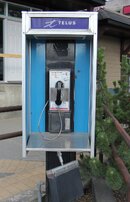dumpsterDiver
Banned
- Messages
- 9,003
- Reaction score
- 4,661
- # of dives
- 2500 - 4999
There are some people who believe that supervision tends to INCREASE the frequency of BO. This "theory" makes sense to me - a diver who "knows" a buddy has his back and is watching him, may well decide to push things harder than if he knew he was solo. The answer to this is, of course, "never rely on your buddy being there"..
The reality of the situation is that it would be extremely rare to require CPR. A freedive class will stress safety and rescue procedures. A quick synopsis (based on taking a 1-day course, 3-4 yrs ago)... is
Watch the diver.
In some cases, you may want to descend and accompany the diver for the final ascent (where most all problems occur)
If a LMC or BO occurs, protect the airway.
Get the diver to the surface, protect the air way.
Probably ditch lead.. few freedivers have the mental capacity to ditch lead when in trouble.
Remove the mask
Blow on the cheeks
Talk to the victim and firmly tell them to breathe (often the diver may be paralyzed or a LMC may be occurring and they may be blinded, but often the diver can still receive audible input). In fact visual disturbances, tunnel vision, seeing stars etc.. can often be valid warning signs to a diver that a BO is imminent.
tap on the cheeks
tap, blow talk..The reason for this.. is apparently the brain can often retain some level of function. Normally the airway is closed automatically (a protection mechanism) and when the brain detects that the face is now dry - then this will often stimulate the victim to resume breathing on their own.
I think this is supposed to be repeated for maybe 25 seconds, if recovery does not occur. Then a few rescue breaths should be provided and continue the tap, blow talk routine.
It is important to do this immediately and not waste time trying to remove the diver from the water.
If a diver does not recover from this procedure relatively quickly... I think you have a real problem.
The video of them working on that female BO victim was pretty much textbook , as far as I know.
The recovery protocol is different from what a lifeguard would be trained to do, if they recover a victim unconscious on the bottom of a pool
I'm not really sure, but I think there may be some people who are advocating for administration of a rescue breath almost immediately and to forgo the tap and blow stuff.
I only carry an oxygen (scuba bottle) for scuba first aid..
Incidentally, I spent hundreds of hours solo freediving (before I knew any of this stuff) and even now, National spearfishing contests are basically run with each diver on their own. They have had fatalities at the national tournaments.
The reality of the situation is that it would be extremely rare to require CPR. A freedive class will stress safety and rescue procedures. A quick synopsis (based on taking a 1-day course, 3-4 yrs ago)... is
Watch the diver.
In some cases, you may want to descend and accompany the diver for the final ascent (where most all problems occur)
If a LMC or BO occurs, protect the airway.
Get the diver to the surface, protect the air way.
Probably ditch lead.. few freedivers have the mental capacity to ditch lead when in trouble.
Remove the mask
Blow on the cheeks
Talk to the victim and firmly tell them to breathe (often the diver may be paralyzed or a LMC may be occurring and they may be blinded, but often the diver can still receive audible input). In fact visual disturbances, tunnel vision, seeing stars etc.. can often be valid warning signs to a diver that a BO is imminent.
tap on the cheeks
tap, blow talk..The reason for this.. is apparently the brain can often retain some level of function. Normally the airway is closed automatically (a protection mechanism) and when the brain detects that the face is now dry - then this will often stimulate the victim to resume breathing on their own.
I think this is supposed to be repeated for maybe 25 seconds, if recovery does not occur. Then a few rescue breaths should be provided and continue the tap, blow talk routine.
It is important to do this immediately and not waste time trying to remove the diver from the water.
If a diver does not recover from this procedure relatively quickly... I think you have a real problem.
The video of them working on that female BO victim was pretty much textbook , as far as I know.
The recovery protocol is different from what a lifeguard would be trained to do, if they recover a victim unconscious on the bottom of a pool
I'm not really sure, but I think there may be some people who are advocating for administration of a rescue breath almost immediately and to forgo the tap and blow stuff.
I only carry an oxygen (scuba bottle) for scuba first aid..
Incidentally, I spent hundreds of hours solo freediving (before I knew any of this stuff) and even now, National spearfishing contests are basically run with each diver on their own. They have had fatalities at the national tournaments.




